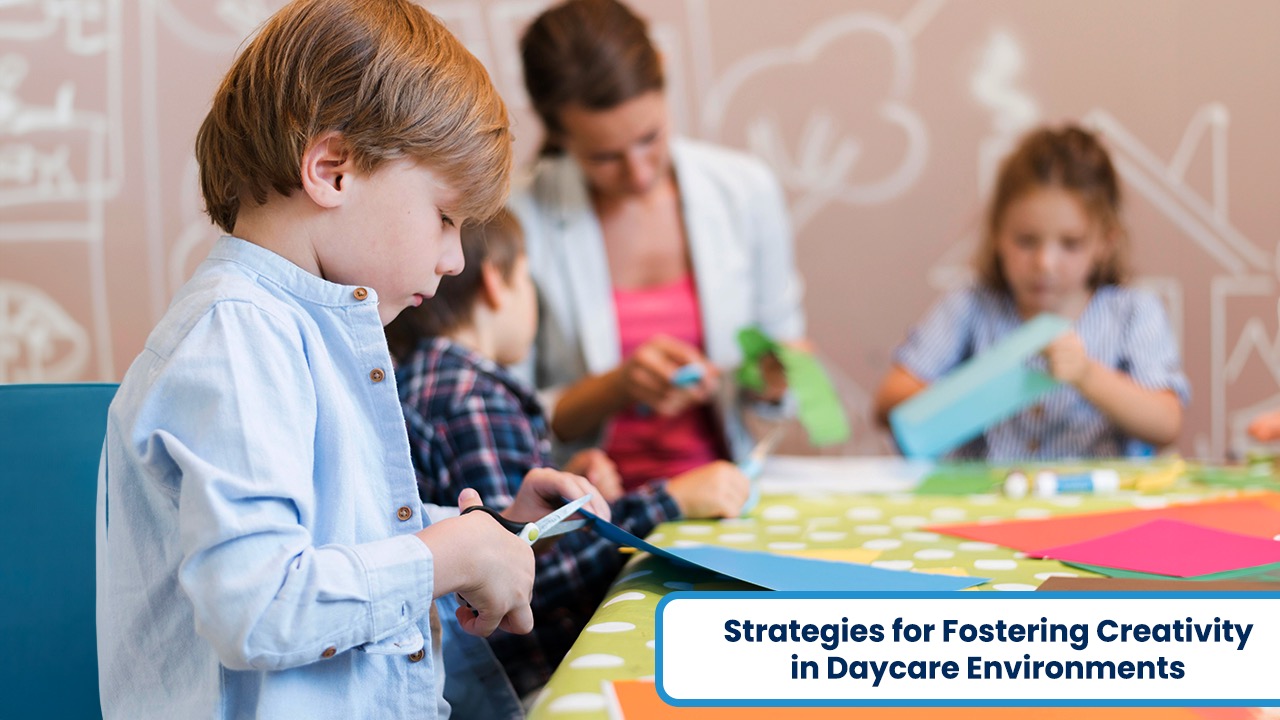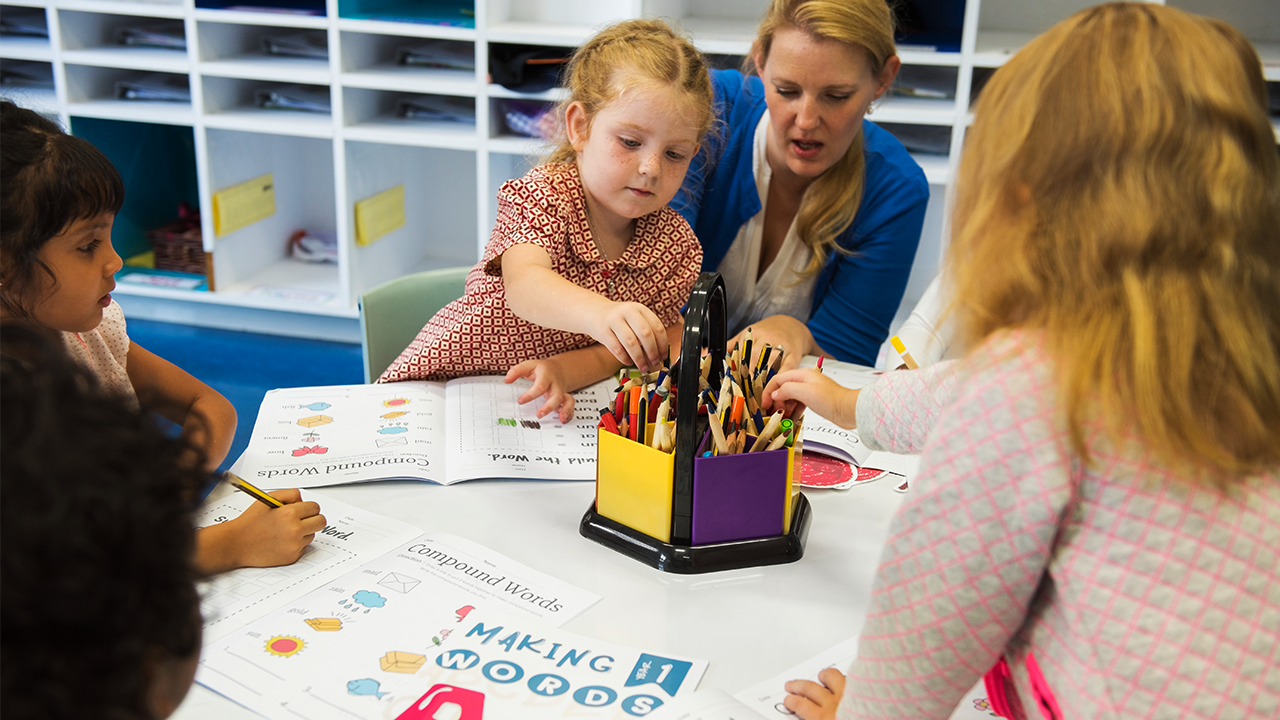
Fostering creativity in daycare environments is not just about keeping children occupied; it’s about nurturing their natural curiosity and imagination, laying the foundation for lifelong learning and innovation. There are countless ways to inspire creativity in young minds, from art activities to imaginative play. In this blog post, we’ll explore the importance of creativity in daycare environments and offer practical tips for educators and caregivers to cultivate creativity in their programs.
The Importance of Fostering Creativity in Daycare Environments
Creativity is more than just drawing pictures or playing with blocks; it’s crucial to young children’s cognitive, social, and emotional development. Here’s why fostering creativity in daycare environments is so important:
Enhanced problem-solving skills:
Engaging in creative activities encourages children to approach problems from multiple perspectives and explore various solutions. Children develop critical thinking skills through experimentation and trial-and-error and learn to adapt to new challenges.
Stimulated Brain Development:
Creative activities stimulate neural connections in the brain, promoting cognitive development and enhancing learning capacities. Children exercise their brains in diverse ways by engaging in imaginative play, art, music, and storytelling, fostering neural plasticity and cognitive flexibility.
Fostered Emotional Regulation:
Creativity provides children with a constructive outlet for processing and expressing their emotions. Engaging in creative pursuits such as drawing, painting, or role-playing allows children to explore and communicate complex feelings, promoting emotional awareness and regulation.
Encouraged Self-Discovery and Identity Formation:
Creative activities empower children to explore their interests, talents, and identities in a supportive and non-judgmental environment. Through artistic expression and imaginative play, children discover their unique strengths and preferences, fostering a sense of self-confidence and identity formation.
Promoted Language and Communication Skills:
Creative activities such as storytelling, puppetry, and dramatic play encourage young children’s language development and communication skills. By narrating stories, expressing ideas, and engaging in collaborative play, children build vocabulary, improve articulation, and develop effective communication strategies.
Cultivated social skills and collaboration:
Creativity frequently entails teamwork, collaboration, and compromise among peers, nurturing the cultivation of crucial social abilities. Engaging in group endeavors, imaginative play, and joint problem-solving, children practice effective communication, conflict resolution, and cooperative efforts aimed at mutual objectives.
Practical Strategies for Fostering Creativity in Daycare Environments
Let’s explore some practical strategies for fostering creativity in daycare settings:
Provide open-ended materials:
Offer diverse open-ended materials and supplies, encouraging children to explore, experiment, and create without predetermined outcomes. Examples include art materials like crayons, markers, paints, clay, collage materials, and building materials like blocks, LEGO bricks, and loose parts.
Design inviting spaces:
Designate specific areas within the daycare environment that are conducive to creative exploration and play. Create inviting spaces such as art corners, sensory tables, reading nooks, and outdoor play areas where children can freely engage in open-ended activities and express their creativity.
Encourage imaginative play.
Provide props, costumes, and open-ended toys that inspire imaginative play and storytelling. Encourage children to engage in role-playing, pretend play, and make-believe scenarios that allow them to explore different roles, settings, and narratives.
Promote Process Over Product:
Promote a focus on the creative process rather than the outcome among children. Emphasize the value of experimentation, exploration, and self-expression, and celebrate children’s efforts and ideas rather than solely focusing on the outcome.
Offer guidance and inspiration.
Provide children guidance, support, and inspiration as they engage in creative activities. Ask open-ended questions, offer prompts for exploration, and encourage children to share their thoughts, ideas, and experiences through art, music, storytelling, and play.
Embrace Nature and Outdoor Exploration:
Take advantage of outdoor spaces and nature-based activities to inspire creativity and exploration. Provide opportunities for children to engage in outdoor play, nature walks, gardening, and sensory exploration, allowing them to connect with the natural world and draw inspiration from their surroundings.
Celebrate Diversity and Cultural Expression:
Create a culturally responsive environment that celebrates diversity and promotes inclusion. Incorporate multicultural books, music, art, and storytelling into the curriculum, and encourage children to explore and share their cultural traditions, languages, and experiences with their peers.
Encourage risk-taking and experimentation.
Create a supportive and non-judgmental atmosphere where children feel comfortable taking risks, trying new things, and exploring unfamiliar ideas and materials. Encourage experimentation, curiosity, and creative problem-solving, and foster a growth mindset that embraces challenges and learning opportunities.
Classroom Activities that Foster Creativity in Daycare Environments

Art Exploration:
Set up art stations with various materials, such as crayons, markers, paints, collage materials, clay, and recycled materials. Encourage children to explore different textures, colors, and techniques as they create their masterpieces. Offer open-ended prompts or themes to spark their imagination, but allow them the freedom to express themselves creatively.
Sensory Play:
Create sensory bins filled with rice, beans, water, sand, or play dough. Add scoops, funnels, containers, and other tools to encourage exploration and experimentation. Sensory play stimulates children’s senses and allows them to engage in open-ended, hands-on exploration, fostering creativity and imagination.
Dramatic Play:
Set up a dramatic play area with costumes, props, and furniture that encourage imaginative role-playing and storytelling. Provide themed playsets, such as a kitchen, doctor’s office, or construction site, and inspire children to take on different roles and act out scenarios, fostering language development and social skills.
Storytelling and Puppetry:
Create storytelling corners with various books, puppets, and props. Encourage children to retell familiar stories, create their own stories, and act out scenes using puppets and props. Storytelling promotes language development, imagination, and narrative skills, while puppetry allows children to express themselves creatively and build self-confidence. Read also about the role of storytelling in early education.
Music and Movement:
Integrate music and movement activities into daily routines, such as singing, dancing, and playing musical instruments. Provide a variety of instruments and props, such as scarves, ribbons, and rhythm sticks. This encourages children to explore rhythm, movement, and self-expression through music. Learn more about using art and music to enhance children’s development in daycare.
Conclusion
Fostering creativity in daycare environments is essential for supporting children’s holistic development and preparing them for success in school and beyond. Daycare educators and caregivers can ignite children’s imaginations, spark their curiosity, and instill a lifelong love of learning by providing opportunities for creative expression, exploration, and collaboration. Learn also about outdoor activities for creative exploration in daycare.


